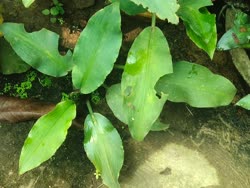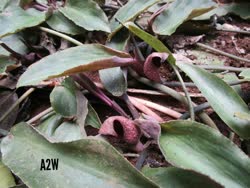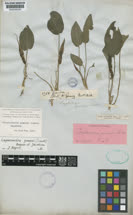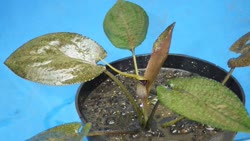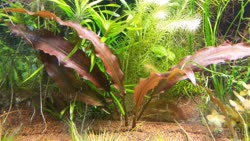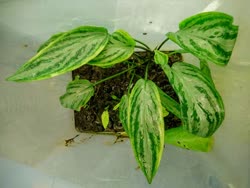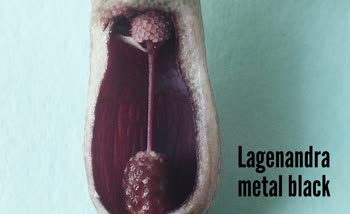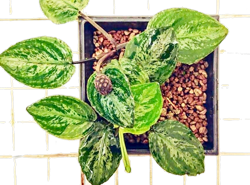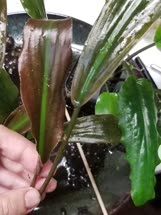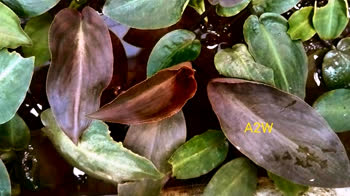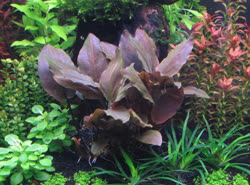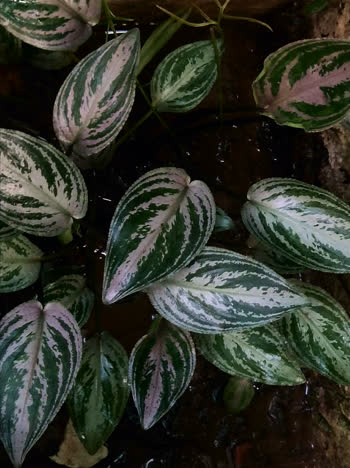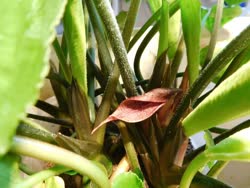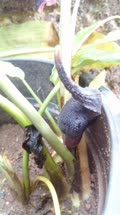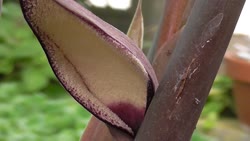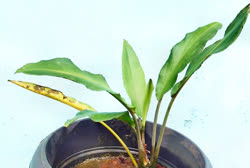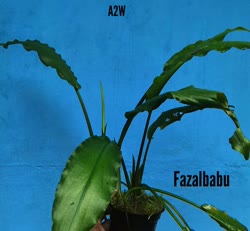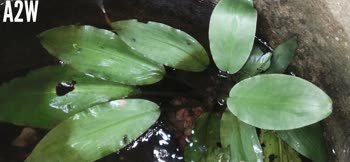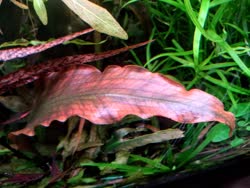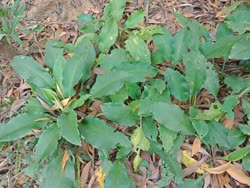|
"Looking purely at the flowers, I consider these two large Lagenandra species to be the most beautiful of the family.
Unfortunately, they become really gigantic, too large for the small emersed garden, so they rarely find their way into our collection.
I tried them for a few years. But they not only need a lot of space, but also a lot of light and heat, which makes it hardly feasible in today's times.
They are planted in sandy substrate, in relatively small pots, so that the rhizomes can grow over the edge and the roots can reach the water from them.
|
|
Himalaya. The only one epiphytic Lagenandra from India. Grows at very low temperatures with beautiful narrow leaves that look similar to Bucephalandra. |
